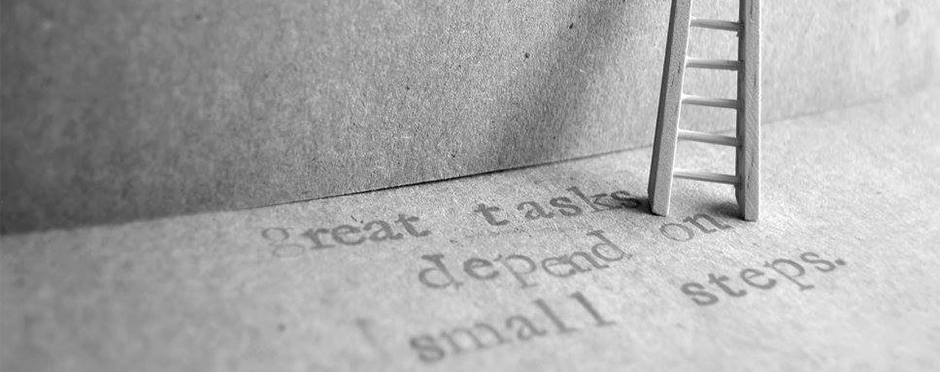
Stronger than Yesterday: Setting Strength Training Goals
Leave a CommentA New Year can be unpredictable, but setting authentic goals combined with genuine pursuit can usher in the kinds of change and inspiration you are seeking. If becoming stronger and more confident are goals you have in mind, this post has tips to make it happen!
As mentioned in the first post of this series (#Stronger than Yesterday: Why Should I Strength Train?), building physical strength is a profoundly effective route to increasing overall health. Unfortunately, success does not happen overnight. Achieving your healthiest self is a process, and the initial steps call for a mindset of growth, defining success and setting goals.
Attitude will affect behavior. Attitude plays a pivotal role in reaching fitness goals.1 Beginning and continued strength training is heavily influenced by upholding a positive mindset. This is a thoughtful process. It is important to reflect upon your attitude toward strength training. A positive attitude will increase the likelihood that you will stick to your goals.1
For instance, it is important to acknowledge there will likely be barriers to deal with when setting a goal. Lack of time is one of the biggest barriers people attribute to not being able to exercise.2 Understanding barriers you may be up against is a great way to begin cultivating a mindset for change. Ask yourself the following questions to gauge your attitude about setting new strength training goals:
- What is appealing about strength training?
- What am I hoping to accomplish?
- What benefits will I receive from committing to my strength training goals?
Defining success also defines action. Goal orientation is another valuable component in goal setting. The way in which you define success will dictate the actions you take to reach success.3
It is important that goals are rooted in acquiring new skills, learning and self-improvement. Goals oriented in this way lead to greater satisfaction and achievement in exercise. It is also important to view individualized strength goals as a process toward becoming the best version of yourself. In doing so you will continue to develop an attitude that believes improvement is possible and that you can become stronger. Ask yourself the following questions about the orientation of your strength training goals:
- How will I define success in my strength training goal?
- What new skills do I want to learn as I work toward this goal?
Goals should be S.M.A.R.T. With any new fitness goal it is important to concretely define the specifics to increase the likelihood of success. Setting your goals using the “S.M.A.R.T.” strategy allows you to consider the details of your training.4 Each goal should be:
Specific – A specific goal should have an outline detailing what it is. The more specific the better!
Measurable – Tracking progress can be in the amount of sets, weight lifted or days committed to lifting. Goals become easier to reach when success is measurable.
Attainable – It is important that strength training goals are within your reach. A goal set too high will be extreme, a goal set too low will be something you know you can do easily. An attainable goal should fall somewhere in the middle!
Relevant – Any goal put in place should have importance to your life as it is now. Trying to achieve someone else’s strength training goal can have detrimental effects to progression.
Timely – Goals need an end-point. Giving your goal a timeline adds accountability to your strength training routine!
Healthier Habits Start with Goals
Physical success in the gym is proceeded by positive attitudes and smart goals. If beginning a new strength training program is your goal in the New Year, it is important to start with the mind so the body can follow. Getting strong is much more than picking up heavy weights. Building long-lasting healthy habits starts with a mindset of growth.
If you want to learn more about strength training, schedule an appointment at an Athletico near you.
Click to Request an Appointment Today
The Athletico blog is an educational resource written by Athletico employees. Athletico bloggers are licensed professionals who abide by the code of ethics outlined by their respective professional associations. The content published in blog posts represents the opinion of the individual author based on their expertise and experience. The content provided in this blog is for informational purposes only, does not constitute medical advice and should not be relied on for making personal health decisions.
References
1. Conner, M., & Armitage, A. “Extending the Theory of Planned Behavior: A Review and Avenues for Further Research.” Journal of Applied Social Psychology, 28, 15, 1998, 1429-1464.
2. Booth, M., Bauman, A., Owen, N., & Gore, C. Physical Activity Preferences,
Preferred Sources of Assistance, and Perceived Barriers to Increased Activity Among
Physically Inactive Australians. Preventive Medicine, 26, 1997, 131-137.
3. Moreno, J., Gonzalez-Cutre, D., Sicilia, A., & Spray, C. Motivation in the
Exercise Setting: Integrating Constructs from the Approach-Avoidance Achievement Goal Framework and Self-Determination Theory. Psychology of Sport and Exercise, 11, 2010, 542-550.
4. Vargo, K. “How to Help your Clients Set Goals they can Achieve.” American Council on Exercise, https://www.acefitness.org/blog/5229/how-to-help-your-clients-set-goals-they-can-achieve. Accessed 15 December 2016.
